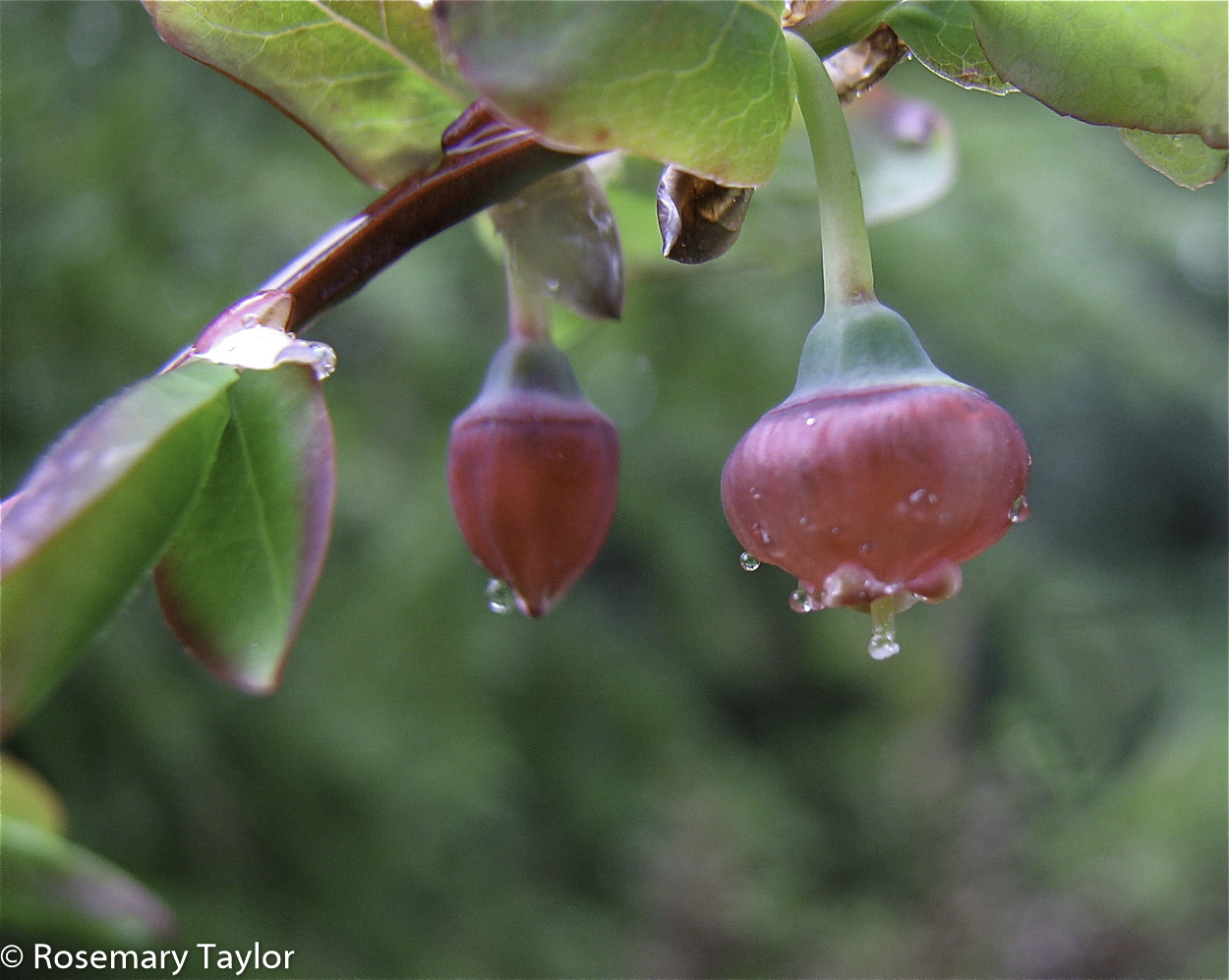Vaccinium alaskaense – Alaskan blueberry
Common Name
Alaskan blueberry
Family
Ericaceae
Scientific Name
Vaccinium alaskaense
Soil Moisture Regime (SMR)
- Medium (M)
- Wet (W)
Soil Nutrient Regime (SNR)
- Poor (P)
Hitchcock, C. Leo, and Arthur Cronquist. Flora of the Pacific Northwest: An Illustrated Manual © 1973. Reprinted with permission of the University of Washington Press.
General / Habitat
- Shrub
- Common to moist coniferous forests, openings, and especially soils rich in decaying wood
- Low to subalpine elevations.
Key Identifying Characteristics
- Form: erect and spreading shrub, up to 2 m tall, and the young twigs are slightly to strongly angled.
- Leaves: alternate and deciduous, 2-6 cm long, and may be entire or serrate
- Flowers: bronze to pinkish green, urn-shaped, grow singly in leaf axils and appear with or after the leaves
- Fruits: bluish-black to purplish-black berries with no bloom
Lookalikes
- Difficult to distinguish from oval leaved blueberry(Vaccinium ovalifolium), and they often grow together. If you bend the leaf in two to expose the underside of the midvein, Alaskan blueberry will have widely spaced whiskers, while oval-leaved blueberry will not.
Co-occurring Species
- Often occurs with Vaccinium ovafolium and Vaccinium parvifolium
External References
Sources
Douglas, G.W. et al (Editors). 1998-2002. Illustrated Flora of British Columbia, Volumes 1 to 8. B.C. Min. Environ., Lands and Parks, and B.C. Min. For., Victoria, B.C.
Pojar, J. and A. MacKinnon. 2014. Plants of Coastal British Columbia Including Washington, Oregon & Alaska. B.C. Ministry of Forestry and Lone Pine Publishing. Vancouver, B.C.


